History
The first Dubbo Council was created in 1872, 23 years after the New South Wales town was surveyed and established on the site of an earlier trading settlement. Some of the earliest council projects involved cutting down trees in public streets, sorting out the drainage work and establishing an effective water supply for the town.
It was proclaimed a City in 1966 and today is home to over 42,000 people, a number which is set to rise in the next 20 years. Indeed Dubbo’s current growth rate is the highest that has been seen in over 20 years
The economy is quite mixed. Medical healthcare is the largest employer, followed closely by retail. A mistaken perception is that Dubbo is a rural centre and people must be farmers, but only 4% are employed in agriculture. It is perhaps better known for being a great regional service centre for at least one third of the land area of NSW and beyond into southern Queensland.
Stewart McLeod is the city’s Director Technical Services. All major engineering services and projects in the City are overseen by him, including roads, footpaths, water supply, sewerage, storm drainage, solid waste management including recycling, emergency management, and “back-of-house” functions like fleet services, design office, traffic engineering and supervision of subdivision and other works by private developers.
Infrastructure is of major importance to a regional centre like Dubbo. With a balance sheet of nearly $2 billion worth of assets to assist with delivering the services the residents of and visitors to Dubbo require, Dubbo City Council is constantly focussed on the provision of new and upgraded assets to meet the needs not only of today but of the community in 30 years time.
Council is planning for a population of 55,000 people in the City within 30 years. This will generate the requirement for projects that create the economic output and essential infrastructure services to support such a population. These demands have led the Council onto the path of smart planning and long term thinking.
Dubbo Regional Livestock Markets
Agriculture has always been, and still is, a very important part of Dubbo’s economy. The multimillion dollar Dubbo livestock market is one of the largest sale yards in Australia for throughput, with 1.3 million sheep and over 200,000 cattle being sold there every year. It is owned and operated by the Council and has been like that for fifty years now. The infrastructure is constantly being upgraded. In 2015 $4 million was spent on upgrading the sheep selling facilities, and 2016 and 2017 will see another $4 million spent on upgrading the cattle facilities.
McLeod says these upgrades are essential for business and the City.
“The Aim of the upgrade is to keep Dubbo as one of the major stock selling centres in Australia. It is a business worth $50 million a year for the city’s economy, so it’s important the Council continues to invest in it.
If you’ve got a good yard with a lot of buyers and sellers, it’s very good not only for local farmers but also farmers across the whole of eastern Australia. They know that if they send their stock to Dubbo there will be lots of buyer and lots of competition for purchase of their stock.
Some of the improvements are high-tech like a brand new set of electronic scales and the infrastructure which accompanies that, but much of the upgrade is basic things like improved fencing, elevated walkways for agents and customers, and putting rubber matting down on the floor for the comfort of stock, but which ultimately improves their condition and increases prices buyers will pay. A lot of the infrastructure investment has been and will be spent on local suppliers.”
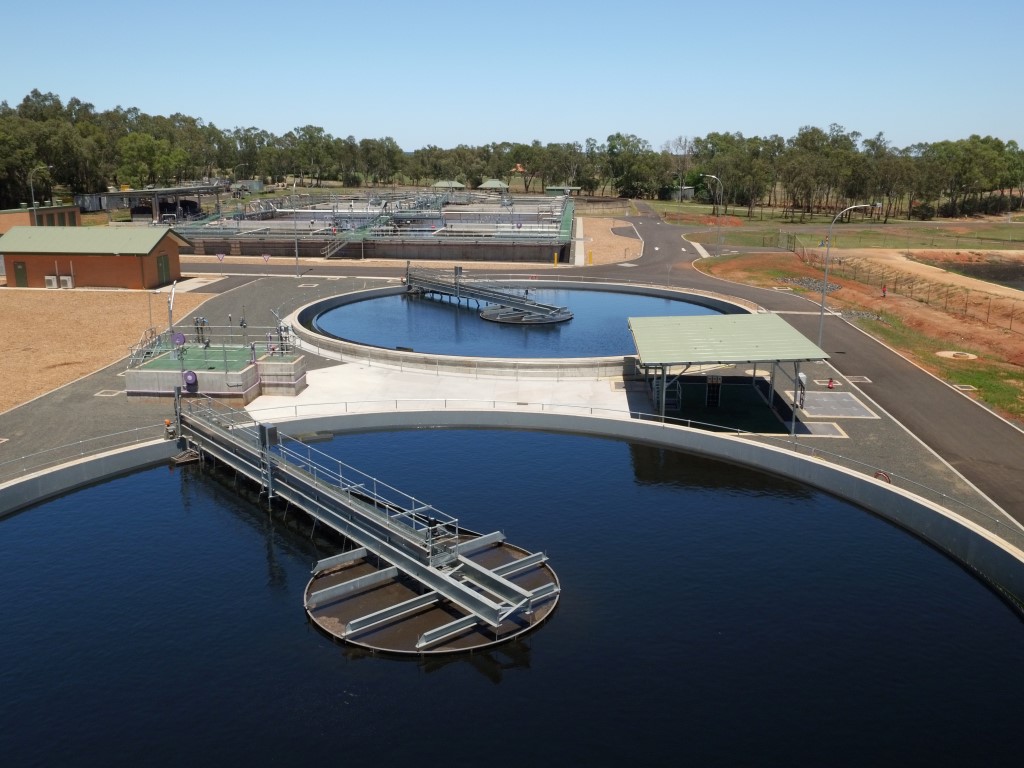
Sewerage and Water Supply
Conscious of the need to accommodate for a growing population, Council began working over 10 years ago on a major capacity upgrade at the Dubbo sewage treatment plant.
“Up until last year it had a capacity of 35,000 people, about equal to its current loading. However with the constant growth of Dubbo and the nearby Villages of Brocklehurst and Wongarbon it was obvious a major upgrade would be needed to cater for future growth.
In 2014-2015 we spent $23 million of council money upgrading it to a 55,000 equivalent population facility. That project is all but finished at the moment, with only a bit of tidying up happening. We didn’t want any constraints on Dubbo’s ability to accept new businesses and new people. We did a similar project on the water plant back in 2006 which increased that plant’s capacity to 55,000 EP, but that’s outside the three year plan we were talking about. That $21 million project will see us through to around 2040. You can’t just continue to allow a city to grow without an adequate water or sewerage treatment system.”
Eleven years ago Dubbo commissioned its own effluent irrigation farm just north of the City on the property “Greengrove”. This latest sewage treatment plant upgrade will continue to pump treated effluent to “Greengrove” and the adjoining private farmer who also pays us to be allowed to use our effluent. Sewage sludge from the plant is also ploughed into the ground at “Greengove” and this has seen a quadrupling of the Lucerne productivity from those areas where the sludge is used.
The land-based disposal strategy at “Greengrove” has been a very sustainable operation, with both the liquid effluent and treated solids being put to economic use whilst keeping the embodied nutrients and salt out of the Murray Darling River system.
There are still other major projects underway to enhance Dubbo’s water supply and sewerage services. The Villages of Eumungerie and Mogriguy to the north of Dubbo will be supplied with town water for the first time by July 2016 ($4 million). Contractors are on site now undertaking that work. Council’s main water supply weir in the Macquarie River in South Dubbo is presently being upgraded with a rockfill ramp and fishway to make it both safer for people and more environmentally friendly for native fish species, again with a contractor on site ($4 million). And closer to the centre of town, the Erskine Street Sewage Pump Station is about to have its first major upgrade since 1930 in the form of a new overflow storage tank, odour control works, new emergency generator and improved vehicular access. A contract for $7 million was let in March 2016 and work will be underway before the middle of the year.
New Junction, New Challenge
Some recent projects have challenged the City’s capabilities in new ways, with one project requiring Mr McLeod to oversee the building of a new section of railway line, a most unusual activity for a Local Government authority to become involved in.
North Dubbo is a major industrial area in Western NSW which houses the Dubbo Saleyards, a major export abattoir, a major inter-modal transport terminal and more than one hundred other mixed use industrial businesses. The most direct entrance into North Dubbo is at Boothenba Road adjacent to a set of railway points called the Troy Junction, but until October 2015 higher productivity heavy vehicle combinations including B Doubles and Road Trains were not permitted to use this access.
Boothenba Road comes off the Newell Highway, the main Melbourne to Brisbane highway running south to north through Western NSW, but the highway runs directly beside the railway line. Both were so close to each other (15 metres or so) that a road train was never permitted to turn there because if a train happened to be coming it would need to stop with its trailer still hanging out across the highway. Conversely if a road train was trying to turn onto the highway and had to stop for traffic at the intersection, the trailer was left hanging over the railway line and could have been a collision hazard for trains. McLeod said the solution was quite simple.
“Rather than having the railway line running parallel to the highway, we put a curve into the railway line at the point where the level crossing was and moved the crossing 120 metres further from the highway so that now there is a 120+m gap between where the railway crossing is and the Newell highway is. Now if three road trains happened to be following one another, they will be able to turn off the highway and still have room to be stacked until a train passes by and the crossing opens again. The project was called the Troy Junction Rail Diversion and was opened by the New South Wales Minister of Transport in November 2015. The reason for wanting to make the connection more direct was because the next closest crossing to be able to access the North Dubbo industrial area required a 7km deviation for most truck traffic instead of being able to use Boothenba Road, and it was wasting over $1 million each year in fuel costs and another $1 million in lost time for transport operators. We estimate that the environmental and financial benefits will have paid back the $7 million construction cost within three years.”
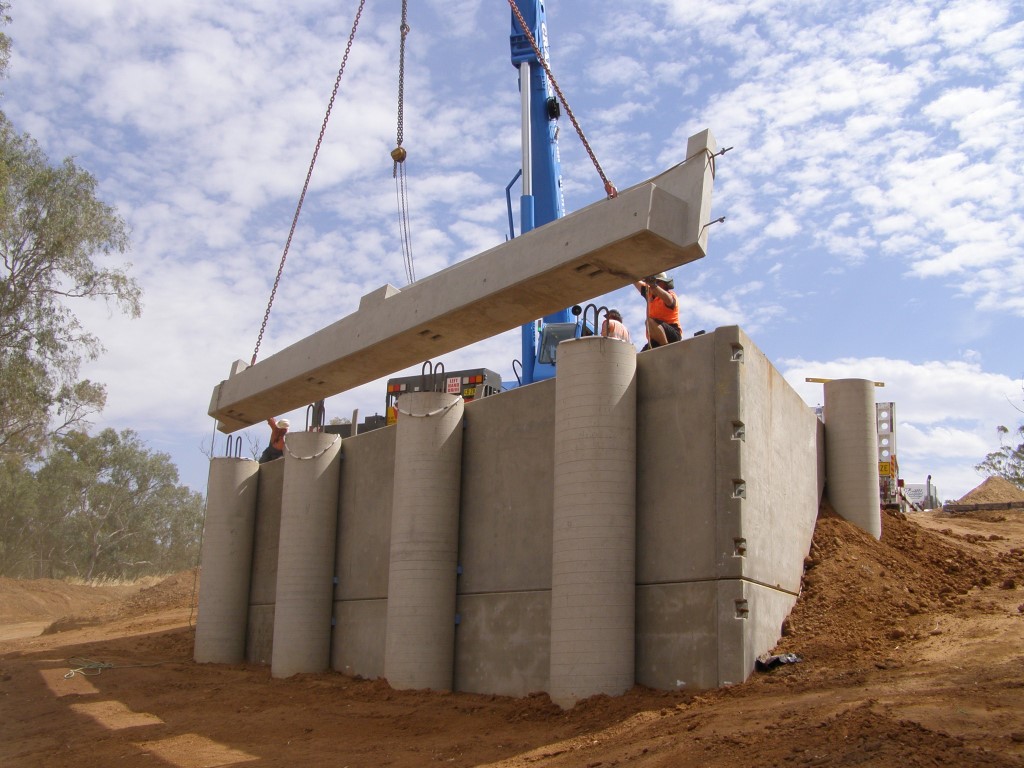
Gulambula Bridge
Dubbo is a natural transport and freight hub in the middle of NSW. Roads radiate from Dubbo to Brisbane, Adelaide and Perth (via broken Hill), Melbourne, Canberra, Sydney, Newcastle and Central Queensland (via Walgett and/or Bourke). Even many of our sub-arterial rural roads are important regional routes in their own right for people and freight seeking to access Dubbo or bypass the highways using lower trafficked areas.
“One such route is the Old Mendooran Road to the northeast of Dubbo. It is becoming quite an important link for heavy vehicle traffic, as it provides an alternative way for all traffic to be able to get from Dubbo onto the Mendooran Road. This latter route goes northeast to the town of Mendooran, but more importantly, it links back up with the Newell Highway near Coonabarabran. Because it’s a bit shorter and flatter than the Newell Highway between Dubbo and Coonabarabran, there is an increasing demand for its use.
Gulumbula Bridge was a Council project completed in 2015 which replaced a dangerous causeway crossing on the Old Mendooran Road over the Talbragar River. This project cost Council $3 million. It makes the connection for heavy vehicles, and local residents and farmers, a lot more attractive and efficient,” says McLeod.
The world Gulambula is an Aboriginal word which means earth oven. When the designs for building the bridge began, Council’s archaeological consultants found numerous Aboriginal artefacts in the ground, including rings of stones used for cooking fires, some of which could be dated back 1600 years. Although some artefacts needed to be disturbed and removed for the bridge construction to proceed, the local Dubbo-ga Aboriginal community were extremely co-operative, and Council was very pleased to recognise the existence of these important artefacts in perpetuity by naming the bridge the Gulambula Bridge.
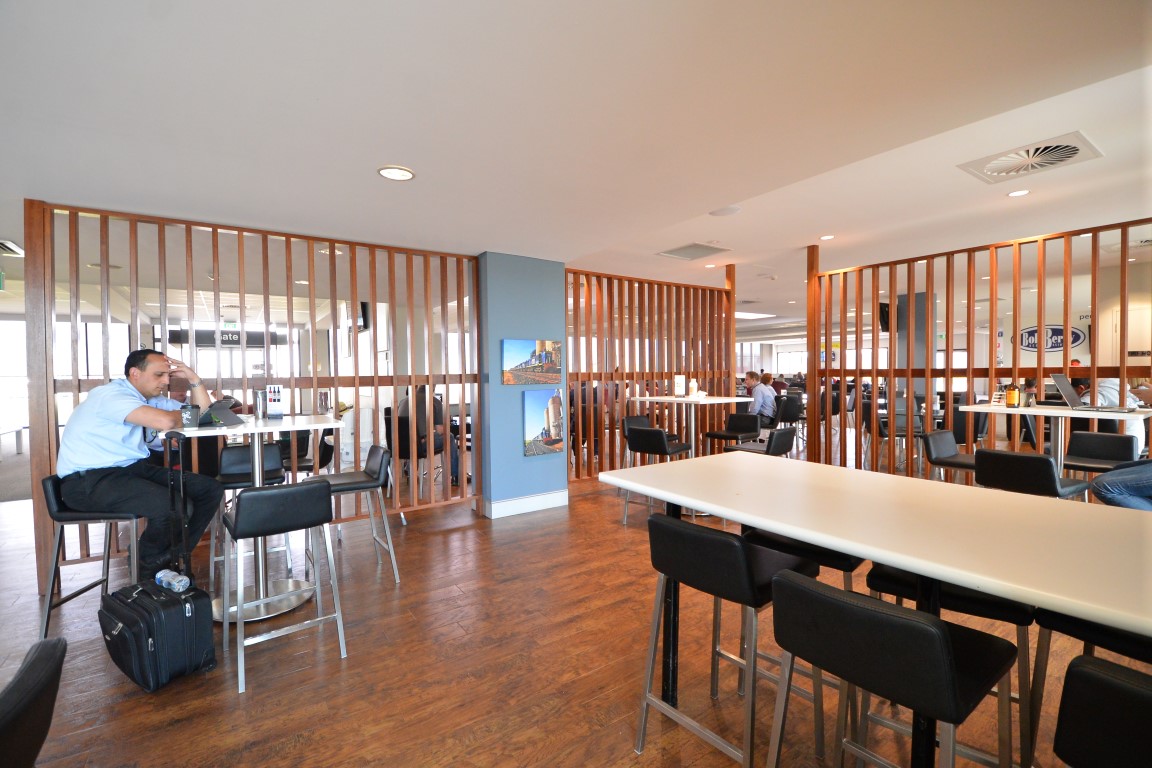
Dubbo Regional Airport
Dubbo Regional Airport is a major point of difference for Dubbo amongst comparable regional centres. Annual passenger numbers now exceed 190,000, and Dubbo passengers can fly daily on numerous flights to/from Sydney, but also most days to/from Brisbane, Melbourne and Broken Hill.
Council’s last major upgrade in 2014 saw $3 million spent on upgrading and extending the terminal, and doubling the carparking capacity adjacent to the terminal. Development continues at the Airport, however, with a further $7 million to be spent commencing later in 2016 on strengthening the main runway to permit the operation of larger aircraft from the Airport in future years.
The Parks of Dubbo are of Regional Importance As Well
Tourism is a big part of Dubbo’s economy and the City’s capability to host large sporting carnivals and events has long been known. Such events are complemented by the huge tourist accommodation availability (motels, hotels, caravan parks and apartments) which sees Dubbo the second highest provider of such accommodation in all of regional NSW. In recent years, however, the facilities on offer to various sporting administrators has been taken to a new level through initiatives of Dubbo City Council.
Mr McLeod said “We’re halfway between Brisbane and Melbourne. There’s a lot of accommodation here. The different sports find they can come here and run carnivals for a week; it’s easy for participants and spectators to travel around, and for many sports there are multiple fields located close to one another. We’ve got good cricket fields, swimming pools, football fields, and now athletics fields as well.”
McLeod was quick to point out that one of his fellow Council Directors, Murray Wood, from the Parks and Landcare Division of Council, has responsibility for these facilities, and he would not like to claim credit for projects he was not involved in.
Barden Park in North Dubbo has been the home to Dubbo Athletics Club for many years. It has always been the main regional club in Northwest New South Wales. In 2015 their facilities were significantly upgraded by Council to the tune of $6 million using a mixture of grant funding and Council’s own funds. The Barden Park Regional Centre of Excellence for Athletics now boasts an international standard tartan running track, good enough for world records to be recognised on, and facilities for all recognised track and field events on the world athletics calendar. McLeod says the upgrades have given the local Club the ability to distinguish themselves in a very positive way from other regional and remote centres.
“The local athletics club, it’s always been marvellous, but they are now able to have seriously important carnivals here in Dubbo. It’s better for athletes training for major competitions. And Dubbo being a regional centre, a lot of the small towns are also now sending athletes down to events in Dubbo”.
Caltex Park Stormwater Harvesting and International Playing Surface Project
In 2013 Council undertook a major $11 million project upgrading the East Dubbo Sporting Complex. Council has since granted naming rights, for a fee, to a well-known oil company, and the main arena is now known as Caltex Park. Much of the funds used for the upgrade were grant funds.
A major part of the project was the installation of a 10 megalitre capacity storage tank underneath the playing service which is filled during rain events from the adjacent street drainage system owned by Council. This provides most of the water then used over the course of a year to irrigate the grass playing surface above.
The other major part of the project, however, was the complete rebuilding of the playing surface into a fully drained couch grass field which has made Caltex Park into one of the best playing surfaces in New South Wales, with local, country and state matches (rugby league, rugby union and soccer) being hosted there. The surface is so well constructed and so well drained that even after a day of football co-inciding with rain you will struggle to find any major wear and tear on the field.
Moving Forward
Dubbo has always been a very well planned and forward thinking community. It has prided itself on delivering the best for its residents and visitors.
Moving forward McLeod says its Road Transportation Strategy adopted in 2012 will complement the actions already taken with respect to water supply and sewerage, and see $110 million of road projects getting done over the next 30 years, including a ring road around the city and several more bridges across the Macquarie River to cater for traffic growth.
In 2015 NSW Premier Baird announced that $50 million would be made available to the RMS for a second high level bridge across the Macquarie River at Dubbo to improve access during floods. This had been proposed to Government by Council since adoption of the 2012 Strategy, supported by an unsolicited Study by Council which indicated such a project could expect to generate projected benefits over 30 years of $190 million.
Dubbo has been the recipient since 2012 of significant NSW Government funding at the Dubbo Base Hospital. Stage One and Two Upgrade works worth $91 million have now been completed, and a further $150 million announced for Stages three and four over the next five years.
In the private sector final Government approvals have just been given (March 2016) for a $1.2 billion Zirconia and Rare Earths Mine at Toongi just 20 kilometres to the south of Dubbo. This major mining development will include onsite processing of the ores in a major value-adding exercise which will see 240 new jobs added to the Dubbo economy over a project life expected to exceed 50 years. Construction is expected to commence by the end of 2016.
With a clear plan and vision for the future, Dubbo is certainly on track to continue its history of innovative thinking.
 Mayor of Dubbo
Mayor of Dubbo
Councillor Mathew Dickerson
Councillor Mathew Dickerson was born and bred in Dubbo and is married with four children. He is a highly successful and prominent businessman with extensive management experience.
Councillor Dickerson is a passionate public speaker and his extensive knowledge of business and technology has seen him deliver presentations as a keynote speaker at dozens of national and international conferences, seminars and other events.
Over the course of a decade Councillor Dickerson has achieved an extensive list of major business awards, from the Gold Rhino Award for best overall business in the region to the Consensus IT Writers Award for most entertaining IT writer in Australia and Microsoft USA’s worldwide small business partner of the year.
Councillor Dickerson has shared his knowledge and expertise through regular columns and feature articles in a number of national and international publications. He features regularly on national radio and has appeared in various other print forums and broadcast programs.
An elected member of Council since 2004, Councillor Dickerson served as Deputy Mayor between 2005 and 2007, and again in 2010. He was elected Mayor in September 2011. This is this fifth term as Mayor.
Councillor Dickerson is dedicated to growing Dubbo in an environmentally and financially sustainable manner.
Councillor Dickerson is currently involved with the following organisations and committees:
- Anittel Limited (ASX:AYG) | founding chairman of Anittel Advisory Board
- Orana Education Co-Op Ltd | board member
- Australian Institute of Company Directors | member and graduate
- Mensa | personal membership of the High IQ society
- Indmark P/L | board member
- Diocesan Finance Council | board member
- Luke Priddis Foundation | board member
- Accommodation Network P/L | board member
- Kaseya Limited | creator of Kaseya Partner Advisory Council
- CompTIA Task Force | Australian representative on international Task Force
School of Rural Health Advisory Board | committee member
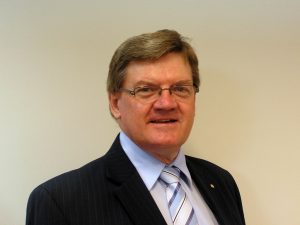 STEWART McLEOD
STEWART McLEOD
Stewart McLeod has had 41 years experience as a professional engineer. He has been Director Technical Services at Dubbo City Council since 1994 and was Director Technical Services at Orange City Council prior to that. Stewart has Honours qualifications in Civil Engineering, a Masters Degree in Business Administration and a Diploma at Distinction Level in Town and Country Planning.
Stewart is active in Local Government and Engineering in NSW, having spent considerable time serving on the NSW Local Government Water Directorate, the Board of IPWEA (NSW), the national Engineers Australia Regional Engineering Special Interest Group, Chair of the Dubbo Country Group of Engineers Australia since 1997, and an Excellence Awards Chief Judge for the Sydney Division of Engineers Australia since 2004. Stewart is an Emeritus Member of IPWEA, a Fellow of Engineers Australia and was the recipient of a Public Service Medal in the Australian Honours Awards announced in June 2011.
AT A GLANCE
WHO: Dubbo City Council
WHAT: Dubbo City Council is the local government authority for the city of Dubbo including surrounding villages; Brocklehurst, Ballimore, Wongarbon, Elong Elong and Eumungerie.
WHERE: NSW 2830
WEBSITE: http://dubbo.nsw.gov.au/
Supporting Partners
Barnson
http://www.barnson.com.au/
Cockram
http://www.cockram.com/
Country Powerline
http://www.countrypower.net.au/
Fulton Hogan
http://www.fultonhogan.com/
Geolyse
http://www.geolyse.com/
EnviroScience
http://www.enviroscience.com.au/
Sponsored Advertorials
- Barnson
- Barson
- Cockram
- Country Powerline
- Fulton Hogan
- Geolyse
- Enviro Science


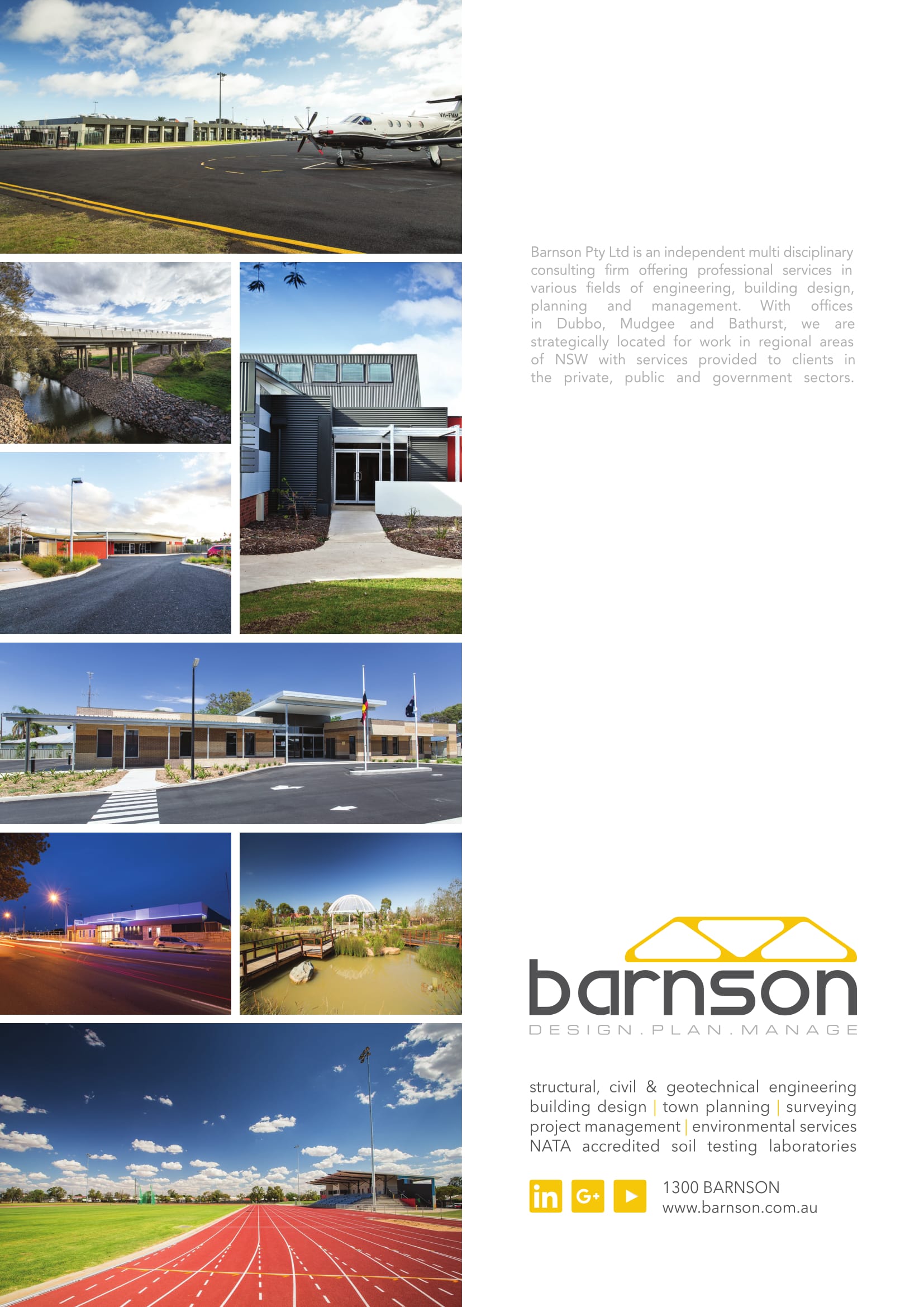
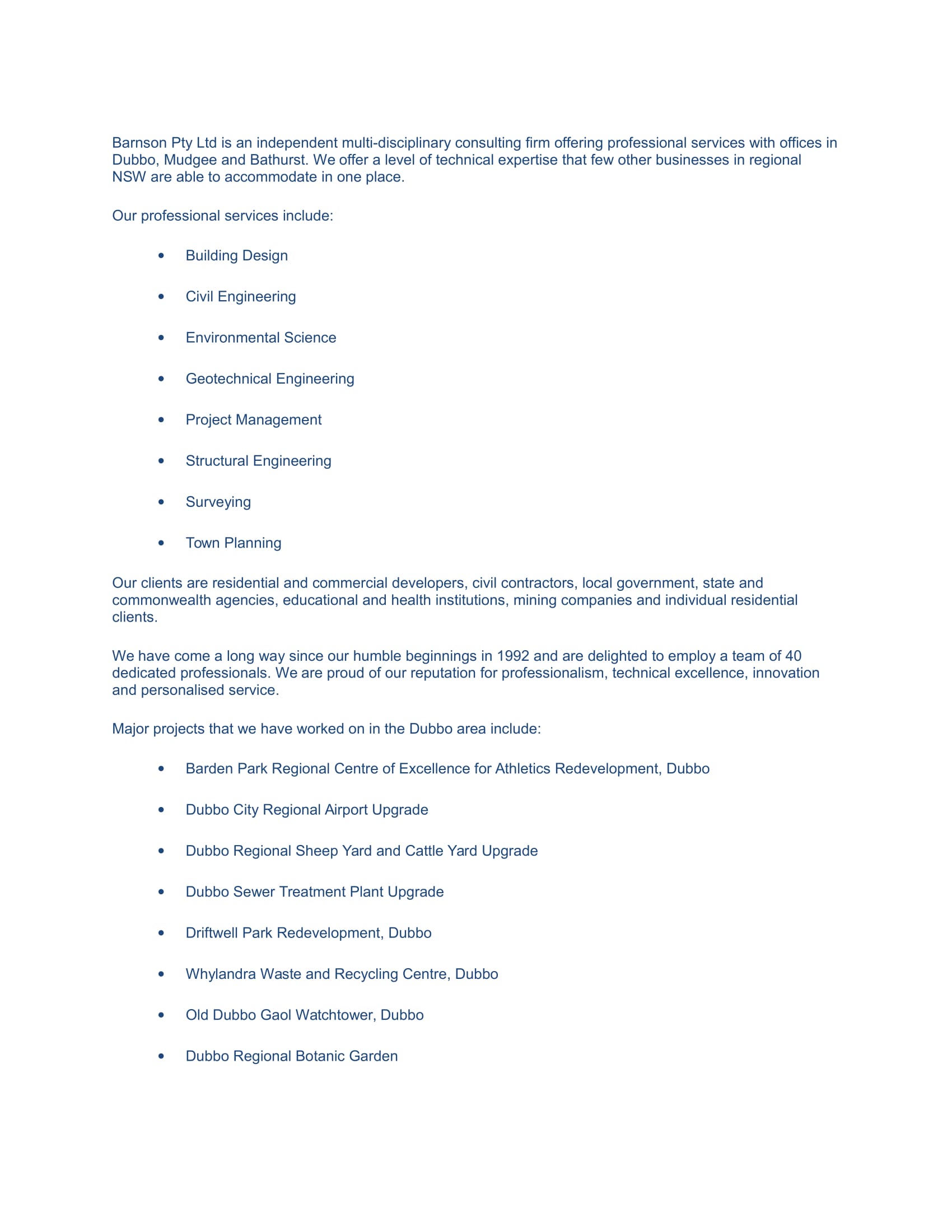
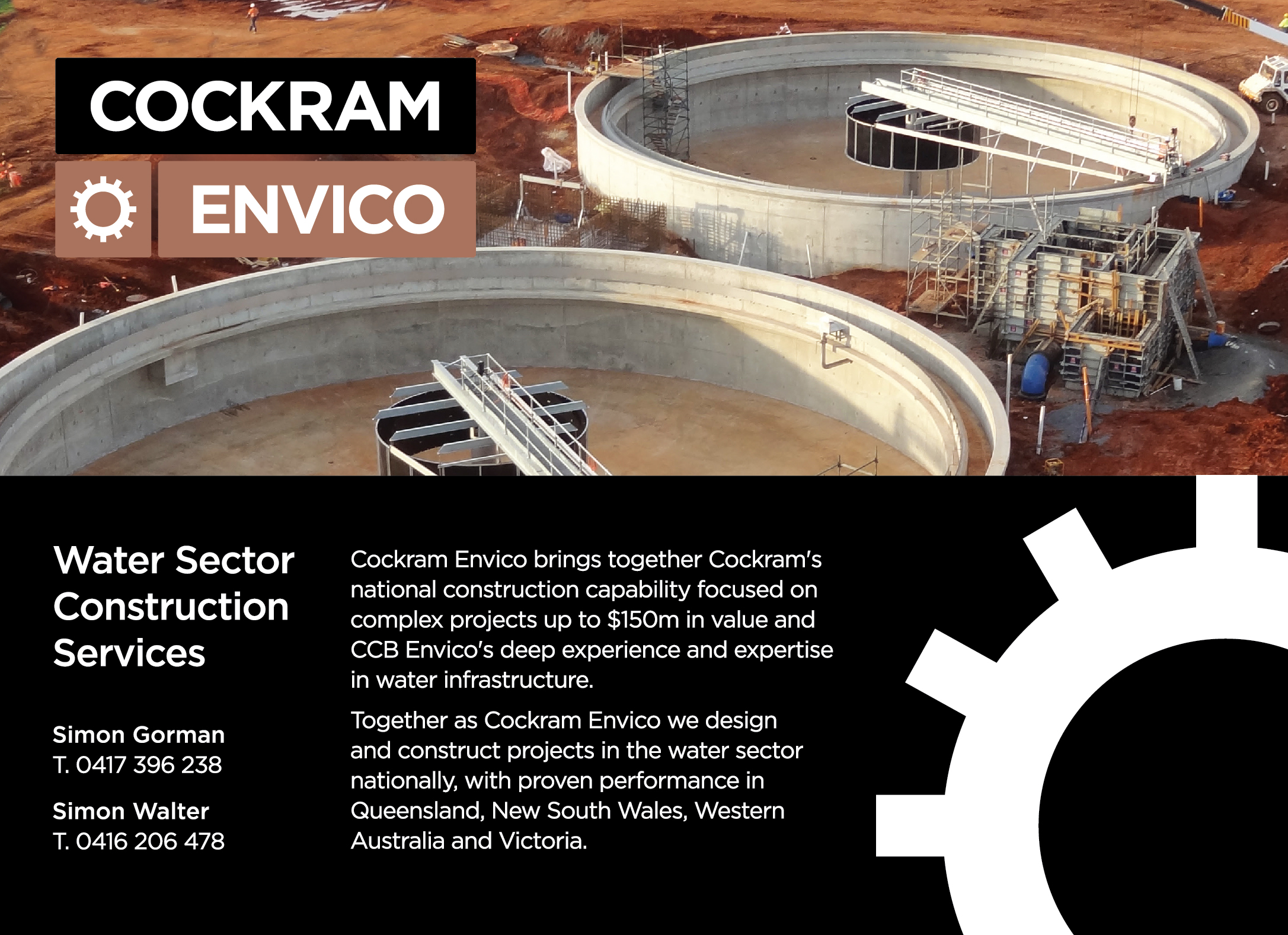

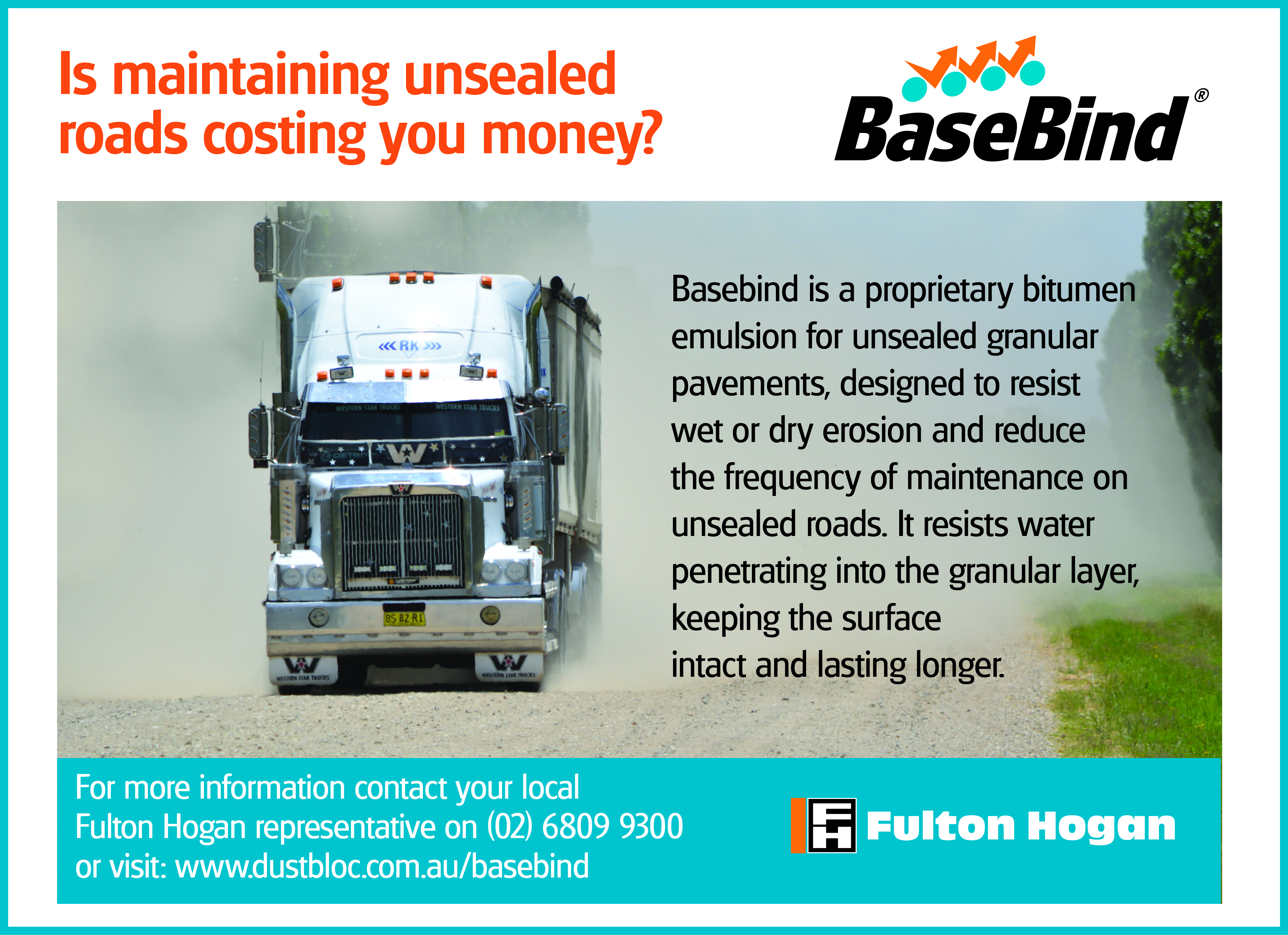
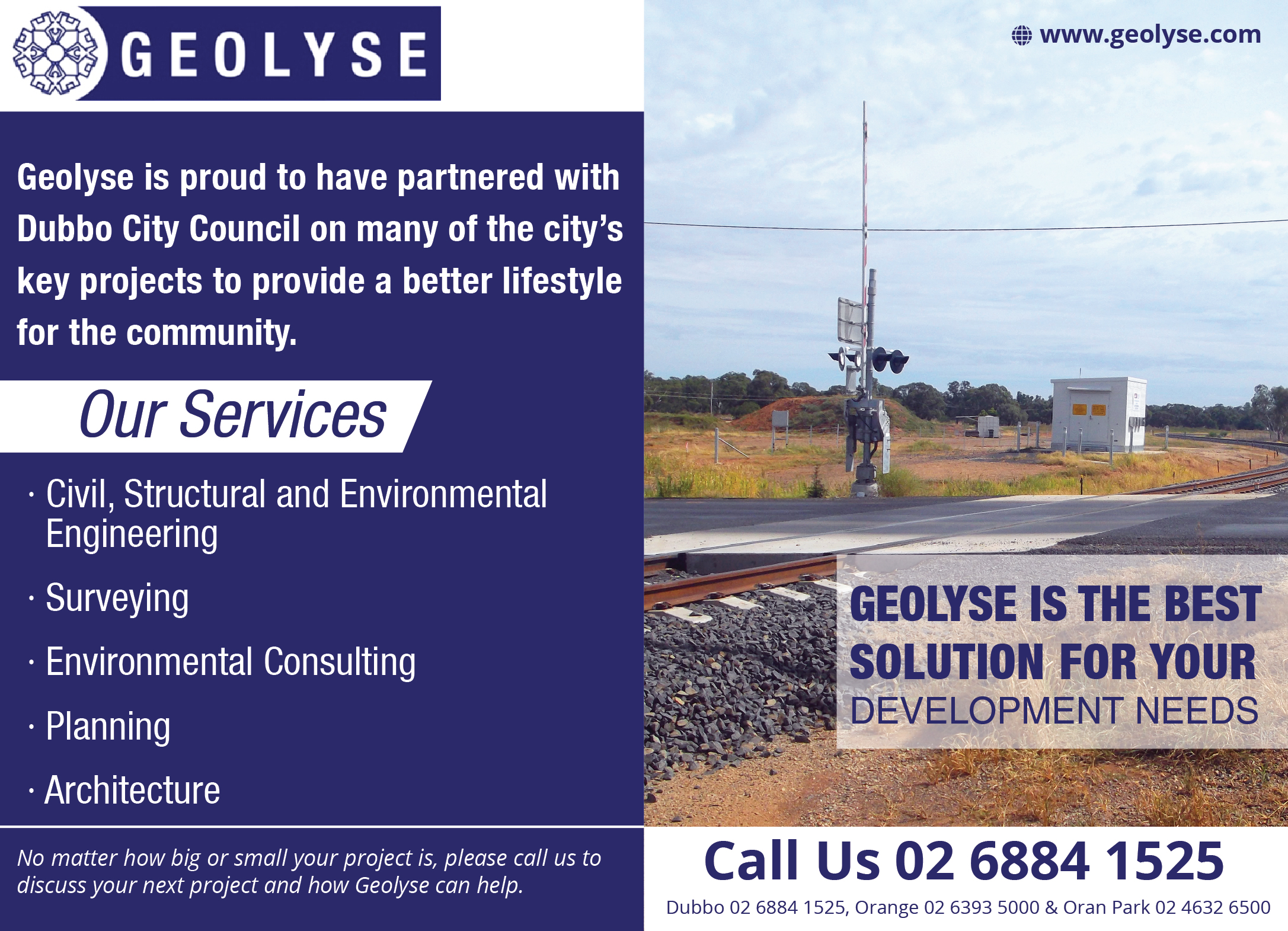


 This information will never be shared to third parties
This information will never be shared to third parties